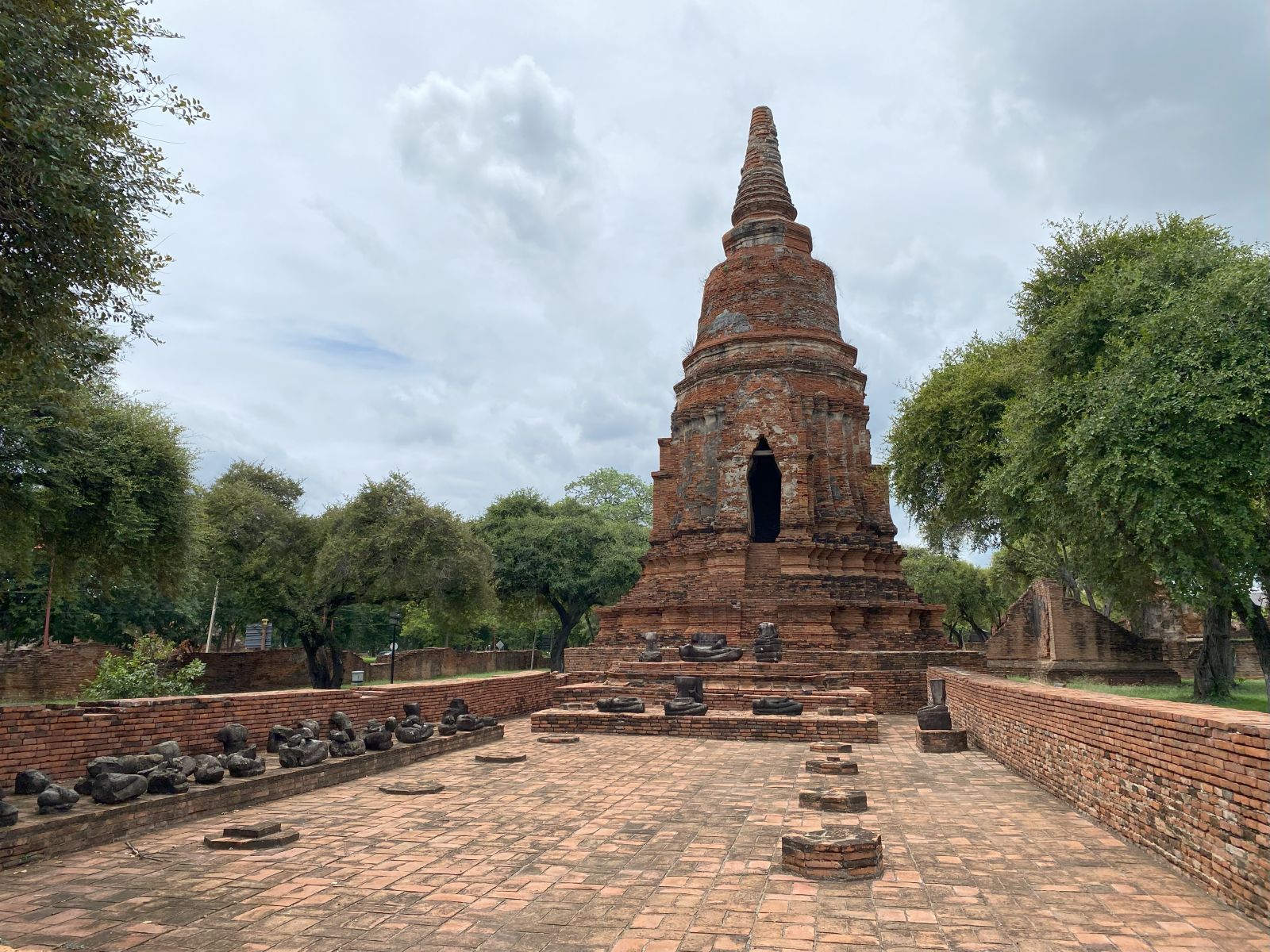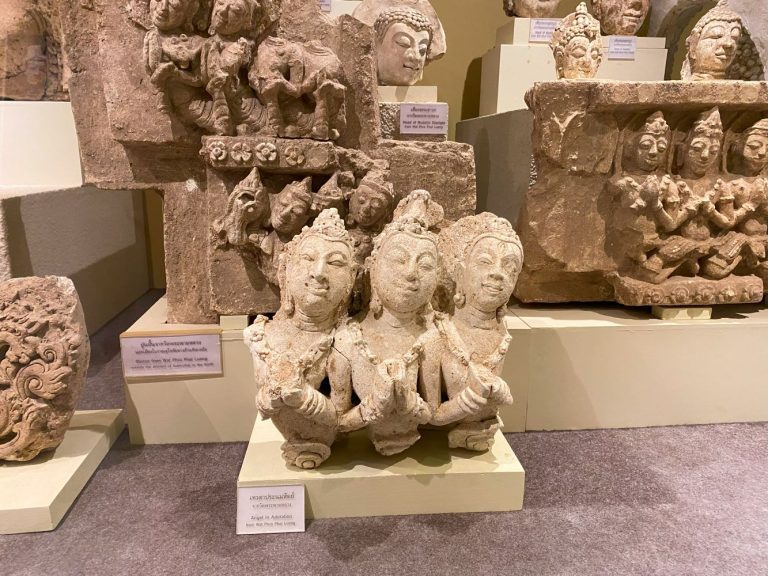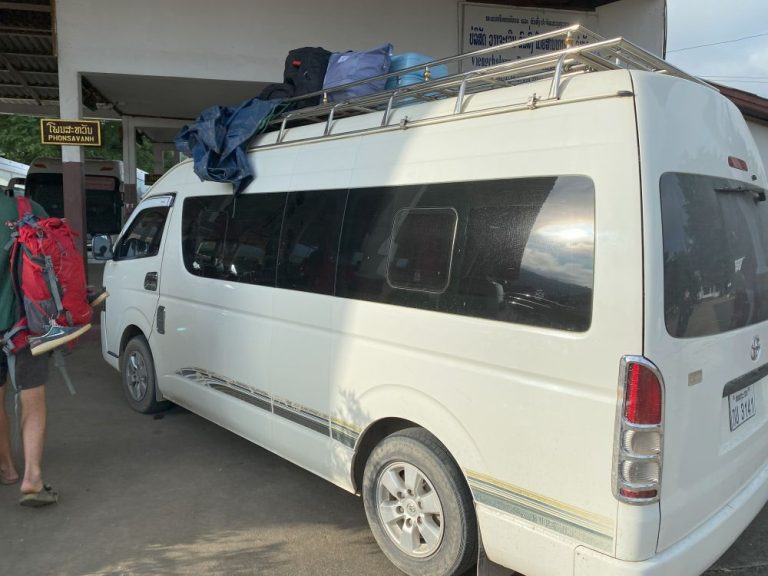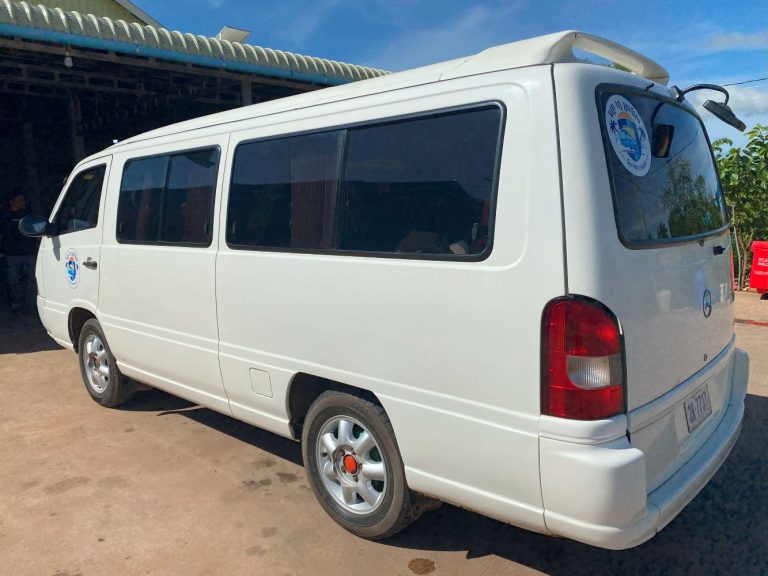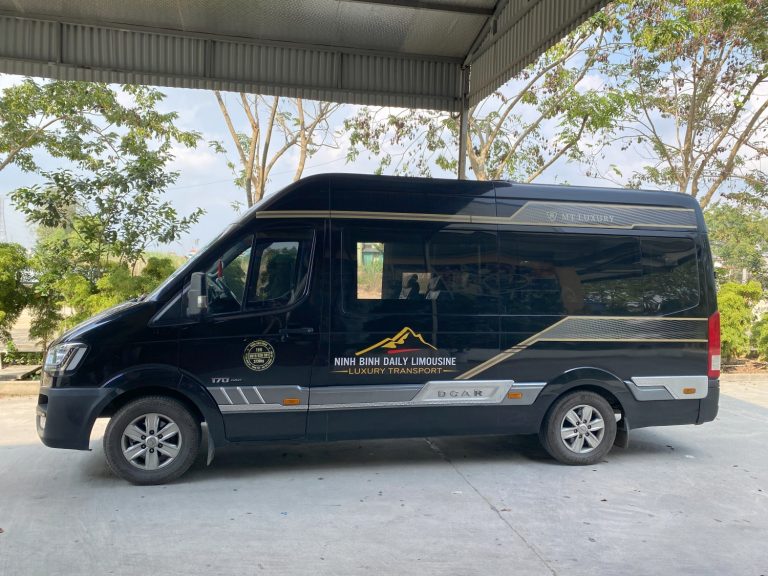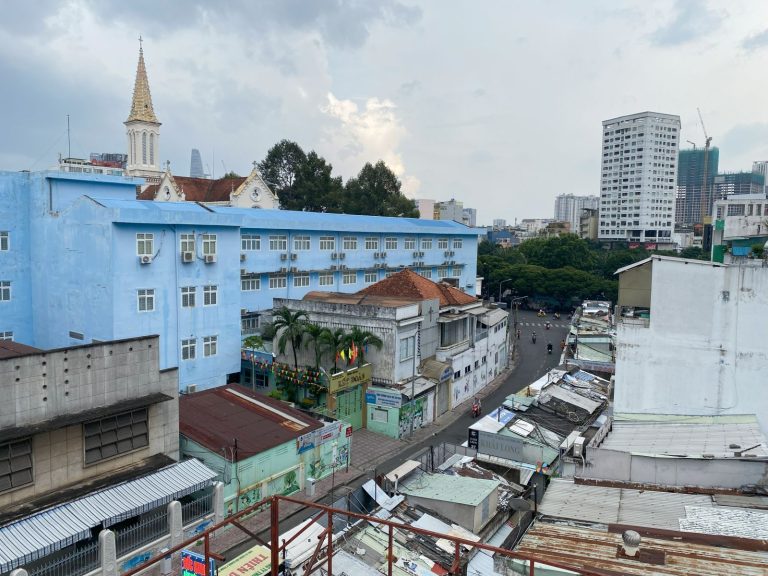Exploring Ayutthaya’s Historical Ruins
While making my way north, I traveled from Bangkok to Ayutthaya, one of the old capitals of the kingdom of Siam. It was destroyed by the Burmese in the 18th century, but ruins of the old temples and monasteries remain. Those ruins are now an UNESCO World Heritage Site, which I enjoy visiting, so I decided to stop by on my way up to Chiang Mai.
Just Gone Wandering is supported by readers! This post contains affiliate links. If you click on a link and buy something, I get a small percentage at no extra cost to you. Your support helps keep this blog running— thank you! Read full disclosure here.
Local train from Bangkok to Ayutthaya
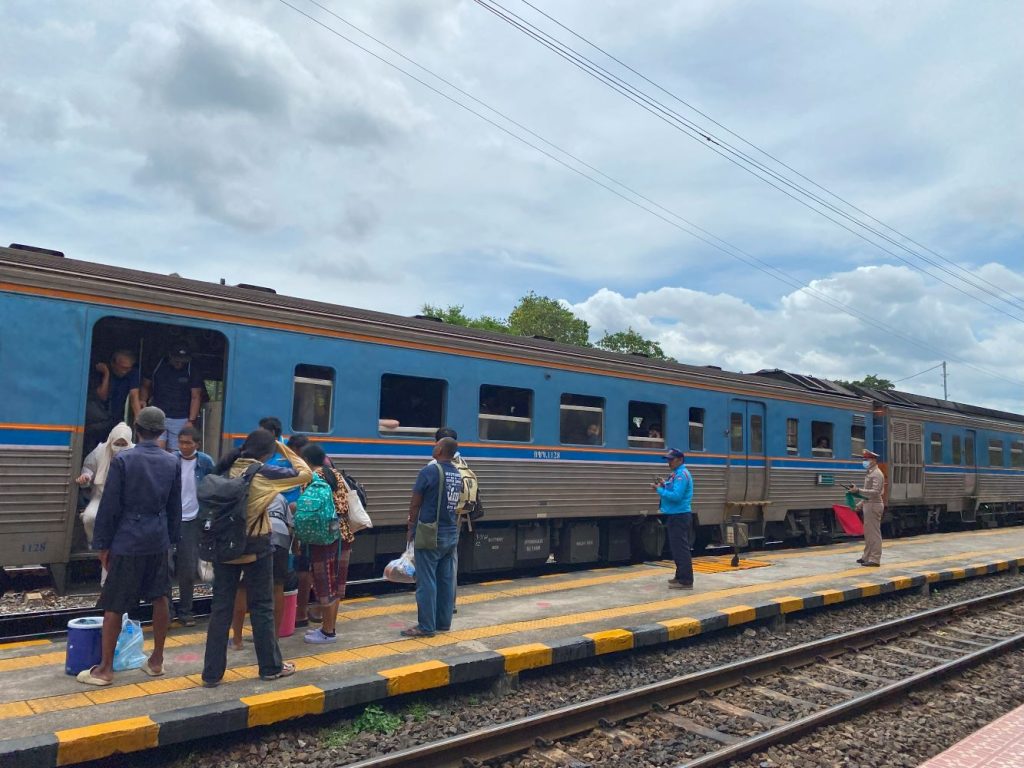
Getting to Ayutthaya from Bangkok is super easy. Many people visit Ayutthaya as a day trip or as part of a day tour, but you can get there by public train as well.
The train leaves from Krung Thep Aphiwat Central Terminal Station (Bang Sue Grand Station) which is easily reachable by MRT/sky train despite being somewhat out of the main part of the city, way to the north.
From Bangkok to Ayutthaya is only about an hour’s journey and a mere 20 THB / $0.60 USD for a seat in 3rd class (fan only, no air con). You should book your ticket AT the counter, not online. This specific local train isn’t available online, anyway.
The train ride was fairly smooth and with all the windows open it wasn’t too hot to sit there for an hour, though it was very crowded. If you’re traveling with large luggage, you may struggle to fit into the car and might want to purchase a higher class ticket.
Once I arrived at the Ayutthaya train station, I took a Grab to my hostel and dropped off my luggage before setting off to explore for a few hours.
🚂Book (other) trains, buses, ferries, transfers and flights all across Asia here with 12Go!
Where I stayed
I booked a dorm bed in Baan Mee Suk Ayutthaya, a family-run hostel literally across the street from one of the ruins. The staff was super nice, and there’s free basic breakfast every morning (toast, coffee/tea). There was only one other person in my dorm when I stayed, but that might’ve been because I was traveling during shoulder season.
Related: Where to stay: Thailand hostels & hotels for solo female travelers
Exploring Ayutthaya Historical Park
Wandering around town is very easy. Many of the ancient sites are within walking distance to each other, but there’s plenty of tuk tuks available to hire if needed. You can hire a tuk tuk for a few hours, the whole day, or just from one site to another.
The ruins are very cool, and there’s been some restoration here and there. They’re all built in roughly the same style and materials because they were built roughly the same time— at least the ones I visited were, anyway. They’re even destroyed in the same way, with all the Buddha statues missing their heads and the walls tilted and broken. (The destruction is due to the invading Burmese army, btw.)
Entrance Fees
You can purchase an admission pass for 220 THB / $6.40 USD that allows entrance to 7 sites, saving about 100 THB / $3 USD in entrance fees compared to buying individual tickets. Some sites are free! But the paid ones tend to be the most famous sites, with something significantly interesting to look at.
I visited five sites:
Wat Ratcha Burana

Located right across the street from my hostel! Huzzah! It was built in 1424, looted in 1957, and partly restored in the last century. The Buddha statues and some treasures can be seen on display in Chao Sam Phraya Museum.
This site has a restored tower and tomb that you can climb onto. I did it, and there was a dog inside sleeping! Also some very faded frescoes that I couldn’t really make out.
A good introduction to the historical park and not crowded at all.





Wat Maha That

Located right next to Wat Ratcha Burana, this is also located in the center of the historical park and I think where most tours tend to start their itineraries.
The first building on the grounds was built in 1374 by one king, and then the site was expanded in 1384 by a different kind and renamed to its current name. This site in particular is famous for its “Buddha head in tree roots” statue (pictured above). It wasn’t like that originally, but some enterprising person put the head in the tree after the whole area was in ruins, and the tree grew around the statue’s head. Now it’s a popular photo spot for tourists!
This one was much more crowded, to the point where I helped a couple Taiwanese tourists locate the Buddha head because they got separated from their tour group and couldn’t figure out where to go. If you wanted just outside of the main parts of the temple grounds, you can find some good spots for looking at bits of ruined statues and such without having a crowd of people breathing down your neck.







I then walked through Bueng Phra Ram Park to get to the next site:
Wat Phra Ram

This is a restored ruin, so it’s very easy to see the elaborate stupas and carvings. The exact date of original construction is debated, but probably some time in the mid-15th century. The monastery was constructed on the cremation site of the first Ayutthayan monarch, King Ramathibodi I.
During excavations, a Buddhapada (footprint of the Buddha) was found and is currently on display in Bangkok National Museum.
I really liked visiting this site in particular because it felt the most “complete,” though all the gold Buddhas and other treasures are no longer on location but on display in museums elsewhere (or looted and sold to collectors). Still, the stupas are fabulous!






Wat Phra Si Sanphet

Very close to Wat Phra Ram and VERY fun to visit. Wat Phra Si Sanphet was the holiest temple in Ayutthaya until it was destroyed by the Burmese in 1767; it was used exclusively by the royal family and you can tell it was important because of how fancy it is. There are three chedis on the site, all restored in 1956 by the Fine Arts Department. Chedis are a type of stupa, a mound-like structure containing Buddhist relics.
It’s unfortunately that more of the site isn’t restored, but perhaps that’ll happen in the future. At the moment, only the three chedis have been restored. The foundations of the other buildings can be seen as well.




I also stopped by Wihan Phra Mongkhon Bophit, which is right next door, where a massive golden Buddha statue sits. This one is much newer, built in the last century, and has a large collection of golden statues inside.
Wat Lokkayasutha

By this point I gave up walking and hired a tuktuk to take me out to the last site on my list, as this one was just slightly to far for me to walk to. I paid 100 THB / $3 USD for maybe a 5 min ride; it was fun but it’s definitely more expensive than Grab, which I took back to my hostel once I was done.
Wat Lokkayasutha is famous for its enormous sleeping Buddha statue, which you can walk right up to. There’s also a few foundation ruins, but mostly the interesting thing is the Buddha statue.



Previous Entry
Bangkok
Save to Pinterest


Read More
More adventures by train around the world:
- From Paris to Toulouse on the Intercites train
- From Singapore to Kuala Lumpur by train
- From London to Paris by Eurostar
See also: How to book bus tickets in Southeast Asia
More UNESCO World Heritage Sites visited:
- 10 fun things to do in Luang Prabang
- Exploring Roman history in Narbonne, France
- Visiting the medieval city of Carcassonne, France
- A week exploring Toulouse, France
- Visiting Hadrian’s Wall | Solo travel in England
Best Travel Resources
- 👩💻Stay organized with the Deluxe Travel Planner Spreadsheet
- 🛌Search Hostelworld for budget stays
- ✈️Search SkyScanner for discounted flights around the world
- 😺Join TrustedHousesitters and do petsitting in exchange for accommodation
- 💳Carry Chase Sapphire Preferred for a travel-friendly credit card
- 📱Use Airalo for eSIMs around the world
- 🚙Check DiscoverCars for international car rentals
- 👩💻Snag ExpressVPN to stay safe while browsing the web
- 🧑⚕️Sign up with VisitorsCoverage for trip insurance

